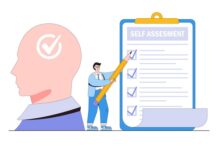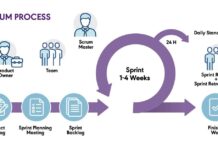Many people hate meetings, but quality meetings are necessary. They enable leaders to make crucial decisions and handle pressing issues. Meetings are either very useful or giant time-wasters. No in-between exists.
Having fruitful meetings requires four core disciplines.
- Meet on time, be specific, like I will meet you at 10:20 and stick to it, consistently build trust in you at your word,
- Have an agenda: this should cover the purpose of the meeting, the People needed, and how long the meeting is. Who needs to prep the agenda, AKA Format? End them as soon as you accomplish your objectives.
- Have action items when you leave.
- Informed secondary audiences about decisions made after the meeting
Before the meeting.
Limit all Meetings to a Single Design Subject
Include only necessary participants. Leave employees enough time for focused, uninterrupted work, especially for designers or coders with a higher need for focused time.
Consider the ripple effects and wasted hours of a weekly meeting that steals participants’ time and the staff members who prepare the meeting. Limited design topics focus on the entire audience instead of only having inputs for a part of the meeting based on a topic.
Pick a Relevant Cast of Characters
Every meeting needs to know the cast of characters, and everyone must be engaged and give input on the topic statement; rip apart meetings often and change the character cast as needed, using guest speakers to mix it up regularly.
Who needs to know the meeting before the meeting?
Ones who influence the buy-in for the change, then the ones who will implement the change. All others do not need to know on day one.
Don’t invite people who are not required, and don’t just keep expanding but drop people off as time goes by. If you meet with relevant members who behave as nonparticipants, make them responsible for the next agenda.
Inclusion of junior people into senior meetings is like giving a promotion; it boosts their morale and fosters successors.
Send the Agenda a Day Before and get Everyone Thinking.
All meetings must have an agenda, whether you announce it or not. Meetings need objectives; if decisions and action items are in doubt, cancel the meeting.
Bring forward the last week’s action items. Move the closed items from last week off the agenda. Ensure new items are added to the meeting to prevent stagnation. Note that this is not the final version, which is why it’s not being sent to everyone yet.
Do call a meeting if you have a clear agenda. Clear goals with a “why” is the first part of clarity. Set agenda for all meetings, including the topic, the time on each, prioritize items, and the expected outcomes for the meeting.
Let them know what you expect to get in the meeting as the output. The agenda for tomorrow’s meeting needs to go out today….as a good practice, I would like to see the agenda the day before.
Send it out as well as store it in an archive system for tracking.
Allocate Time Slots
Getting consensus on a time slot that works for everyone.
All meetings must be regular and highly productive with good people and judgment, i.e., picking the best time of day and using only as much time as needed.
Time is the easiest to control in a meeting. Calculate the duration of your meeting by knowing the allocated points and time for each point on your agenda.
Shorten Meetings: Reduce your Time Slots
10-15-5 for one-on-one weekly meetings, 10 minutes to warm up with the previous week’s informational items, 15 minutes for significant events or a study event, and 5 minutes for action items and buffer for overflow.
Once you have an accurate duration estimate, reduce that estimate by 5% to 10% to add the extra time pressure that makes meetings more effective. The ultimate challenge is to keep meetings to 20 minutes and calls to 5 minutes. Most would agree that is all the time you need, after which you are increasingly wasting time.
Suppose you introduce a policy of meetings that don’t last longer than 15 minutes. In that case, you’ll foster a culture of “bluntness and accountability,” which opens up communication channels and makes meetings more productive.
Shine During the Meeting
Start with a Statement
Go early (especially if you are not the facilitator); if you are, always have the agenda and executive summary upfront.
If no one is in the meeting after 5 minutes, then call someone and find out what is happening.
Getting cameras ON: Meeting in person is the best to get attention and sell your idea. Dress well, and speaking skills at meetings can impress.
Opening the session with good news tends to shorten meetings, and people tend to ask fewer questions overall.
Reinforce the why and the problem statement. Put a RED box for goals. Write copy like it was a news release, and you read it at the beginning of the meeting to set the context.
Your seating order in a meeting relative to the note taker or key person should never be just before or after if you want to be noticed, but if you want to get skipped, sit next to them as they lose focus during the speech.
Be an Emotional Contagion.
Give appreciation, inspiration, and recognition. At the start of each meeting, spend five to 10 minutes showing appreciation for specific team members. Offer inspiration by sharing quotes, songs, and stories.
Mood travels fast, negative comments reduce the energy of the meeting and flow of ideas, and pay attention to the emotion of the meeting.
Refrain from bringing stuff from one meeting to the next; keep your items partitioned so new meeting members are not engaged in emotions from previous meetings.
Be careful what you say in meetings. Knowledge and control of the situation can hurt you if you can do nothing about it. Watch if your enthusiasm level can match your commitment.
Don’t be predictable.
Do you go around the table, and each person talks once during a meeting? Or do you dominate meetings and leave 5 minutes for questions? Are others on devices or multitasking? Does everyone know your meeting pattern? Meetings should never be predictable.
Invite guest speakers, shorten meetings, and make them last 18 minutes. It will catch everyone off guard and make people focus. Hold standing meetings, change seating arrangements, or hold walking meetings to spice it up and make laughter, which increases the number of ideas in a meeting. Ask provocative questions that create a perception in the attendee’s mind.
Build acceptance into your meetings using Information, Study, and Action Items (ISA) Agendas.
Start with INFO items, then Study items (thoughts for change, keep changes in the study area for a few weeks before moving it to the Action items section), and then action items.
Have all quick points in meetings first, then have the long task at the end, which you can call in another meeting.
Encourage feedback before and after from secondary attendants who are not vocal during the meeting.
Study Items – Decisions Making
The best meetings: assign lead, put the question on board, everyone put down answers, get everyone answers, prioritize ideas 3 points for 1st, 2 for 2nd and 1 for 3rd, tally up, and use ten steps to implement. Planning Poker is also an excellent way to engage the entire team.
When Changing positions on a subject:
- Let as much time pass as possible. It will, in many cases, come like new news.
- Show you had new data that helped to flip the decision and cite a few good reasons.
- Never flip-flop in the same meeting. Wait some days.
I need to think about this and get back to you. This is the most critical answer for meetings, especially for introverts.
End The Meeting
You have made a strong start and do the same with the end. Do not end on a sour note. Use waves of 3 good points, then a bad, then three more suitable and a bad, and use this wave frequency the whole meeting. End on a positive note.
Action Items
Close meeting with a follow-up: Send typed meeting minutes and mail them out the same day.
Short Notes Yield Long Results: Your 2nd meeting will be easy if you take good notes from your 1st. Listen a lot, but ensure everyone has clear action plans for leaving meetings. Use no technical language, be confident, and be precise about outcomes.
Also, share with anyone impacted by the decisions of the meeting.
Bonus
Committee meetings must have a significant impact on the first 2-3 months or get rid of them.











[…] Running effective meetings […]
Comments are closed.